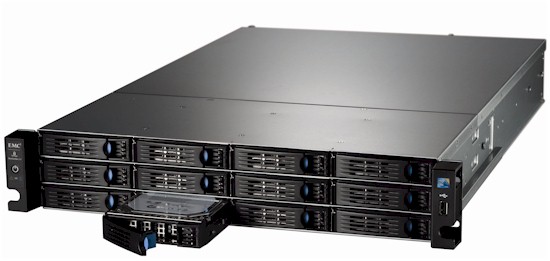The Iomega StorCenter ix12-300r Network Storage array provides up to 24 TB of networked storage in a 2U form factor and is said to "easily" support up to 250 users for production file and block data storage, backup to disk, Hyper-V and VMware virtualization and Exchange Server 2010 storage.

The NAS runs EMC’s LifeLine OS and supports multiple JBOD and RAID 0, 1, 5, 6, and 10 volumes with online RAID level migration and volume expansion. The ix12 also supports storage pools, which enable the drives inside the array to be grouped together by similar size and data protection mechanism.
The hardware platform is based on a 3 GHz Intel Core2 Duo E8400 CPU with 2 GB of DDR2 RAM. Four Gigabit Ethernet ports support aggregation, failover and load balancing as well as VLANs. Three USB 2.0 ports support storage expansion and UPS shutdown synchronization.
Software features include Active Directory, DFS, WebDAV and iSCSI support, recording from Panasonic and Axis network cameras. Backup is supported for Apple Time Machine and to / from rsync and CIFS shares.
The ix12-300r Network Storage array is available this month from CDW at an MSRP of $4,999.99 for the 4TB and $5,999 for the 8 TB configurations.
